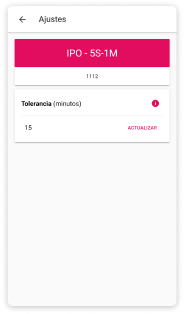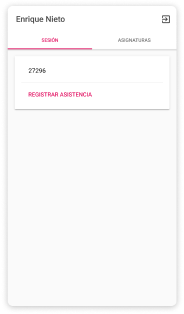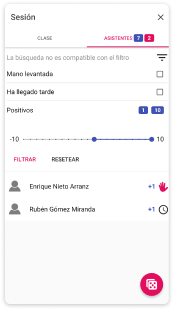process
The
user center design approach was used in this project besides software engineer documentation to produce a complete solution that integrates the user experience design and software development. This approach as is iterative, multiple iterations were performed to improve the solution.
understanding of the context of use
During this phase 10 interviews with students and one focus group with 5 professors were conducted to understand the needs, problems, goals, and frustrations of both types of users and the different technical restrictions that we can have in the software development phase. After them, we came up with four main insights that were addressed in the next phases:
1. Low percentage of attendance to the sessions.
2. Low motivation of the students.
3. Use of the mobile phone in the classroom.
4. Low percentage of participation in the sessions.
specification of user requirements
We identified 3 types of users based on the different interviews conducted in the previous phase, the professor and two types of students, the confident students, and the insecure students. So according to this, 3
Personas were designed, each of them with a description, a set of tasks, and the definition of environments.

Example of one persona designed in the project
specification of system requirements
A set of functional and non-functional requirements were defined to address the different needs of the users with the system limitations that can appear in the development of an app. In addition to this, a set of uses cases were designed to have a clear vision of the different actions and tasks that can be performed in the system.

Example of a use case desinged in the project
design of solution
In this phase, two processes were done at the same time depending on the iteration, on one side, high fidelity porotypes were designed to test them in the following evaluation phase. All these prototypes were designed following the
Nielsen heuristics to try to achieve a good level of usability.
Examples of the second heuristic of Nielsen (Match between system and the real world)
And on the other side, the features that were validated in previous iterations were being developed in the real system.

Architecture of the system

Entity–relationship model of the database
evaluation
Due to some limitations of the project the evaluation performed was not a complete usability test and instead of that, an acceptability test was done in real sessions of classes in the Universidad Politécnica de Madrid. The level of usability was graded using the
System Usability Scale (SUS).
Summary of SUS score (students)
Summary of SUS score (Professors)
final design
The final application tried to achieve three main objectives, increase the attendance of the students in the class sessions, try to encourage students to motivate them to participate in these sessions, and take advantage of the use of mobile phones in the class sessions. According to this, the next set of features were designed in a multiplatform application.
two type of users
The application was meant to be used by students and professors, so two types of accounts were defined for the different users, so each of them can have the most suitable version of the app for their specific needs.

Student initial screen

Professor initial screen
group managment
The system allows the professors to have different groups for each of the courses that they are teaching so they can manage the different classes properly. The students can join these groups to then be able to assist in the class sessions. This will simplify and automatize the registry of attendance in the sessions.

Creation of a group

Info of a group

List of groups (student)
attendance registration
The professors can start sessions so the students can join these sessions to registry their attendance. To do this process as easy and fast as possible, the app provides a random code of 5 numbers to the professor when he starts the session, this code needs to be shared with the students in the room so they can introduce it in their apps and they can see how their participation is being registered.

Info of a session

Registration of attendance
(student)

List of attendance
direct participation
For the first type of students (confident students), we designed a participation system that allows them to virtually raise the hand in the app, so this desire of participation is reflected in the app of the professor and he can easily identify the name of the student when this rise the hand in the real world and register the participation. This registration of participation is notified to the students to make them known that the participation that they did was being taken into consideration. With this information, we tried to create this motivation in the student to keep participating in future occasions.

Session screen (students)
with the hand rised up

List of attendance with the students that have the hand rised up

Pop-up to treat the attendance
This participation can be triggered by the professor instead. The app of the professor offers a button to select a random user that is in the session, also different filters for the list of attendance are provided so he can personalize that randomization for special cases. With this method, we also allow the possibility to the professors to discover students that are faking the attendance and they can treat this as they want.

Filter for the list of attendance

Treat of expulsion
indirect participation
For the second type of student (insecure students) we designed an indirect system to participate, this system is a simplified version of an inbox, so the students can send questions to the professor in the app without the need to physically participate in the session and then the professor can review that questions, answer them and grade them. As we don’t want to overload with work to the professor we give them the decision of how to treat these questions, they can answer each of them or they can simply take into consideration the participation of the students and then answer all of them during the beginning of the next session.

Ask a question
(student)

List of questions
(professor)

Answer of a question
demo of the system



























